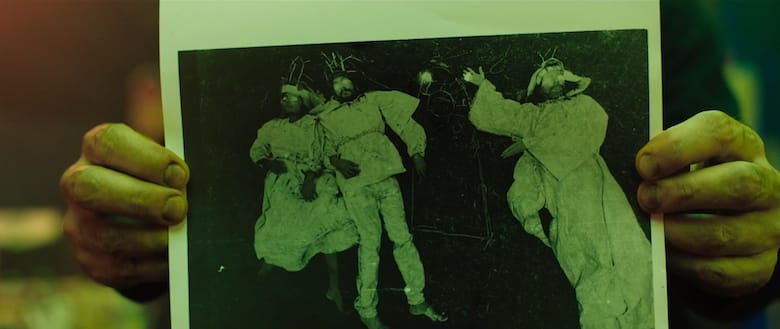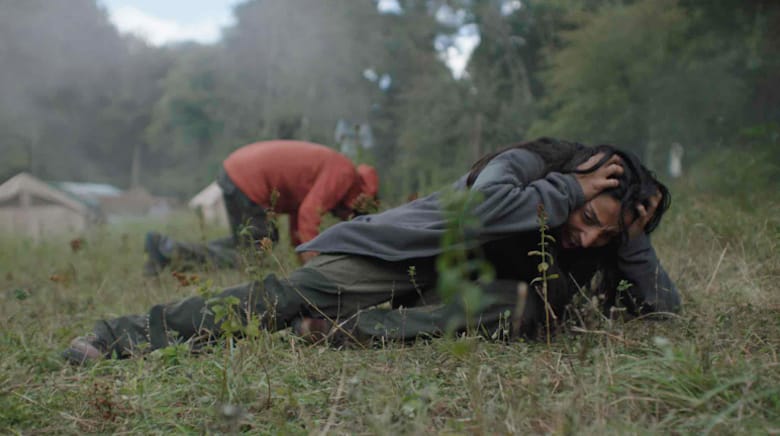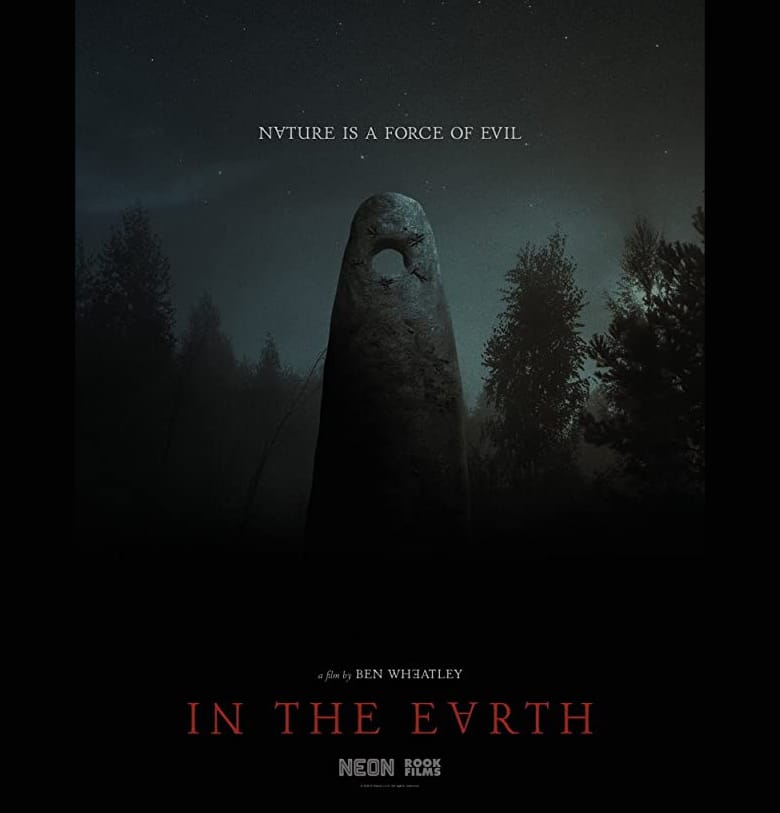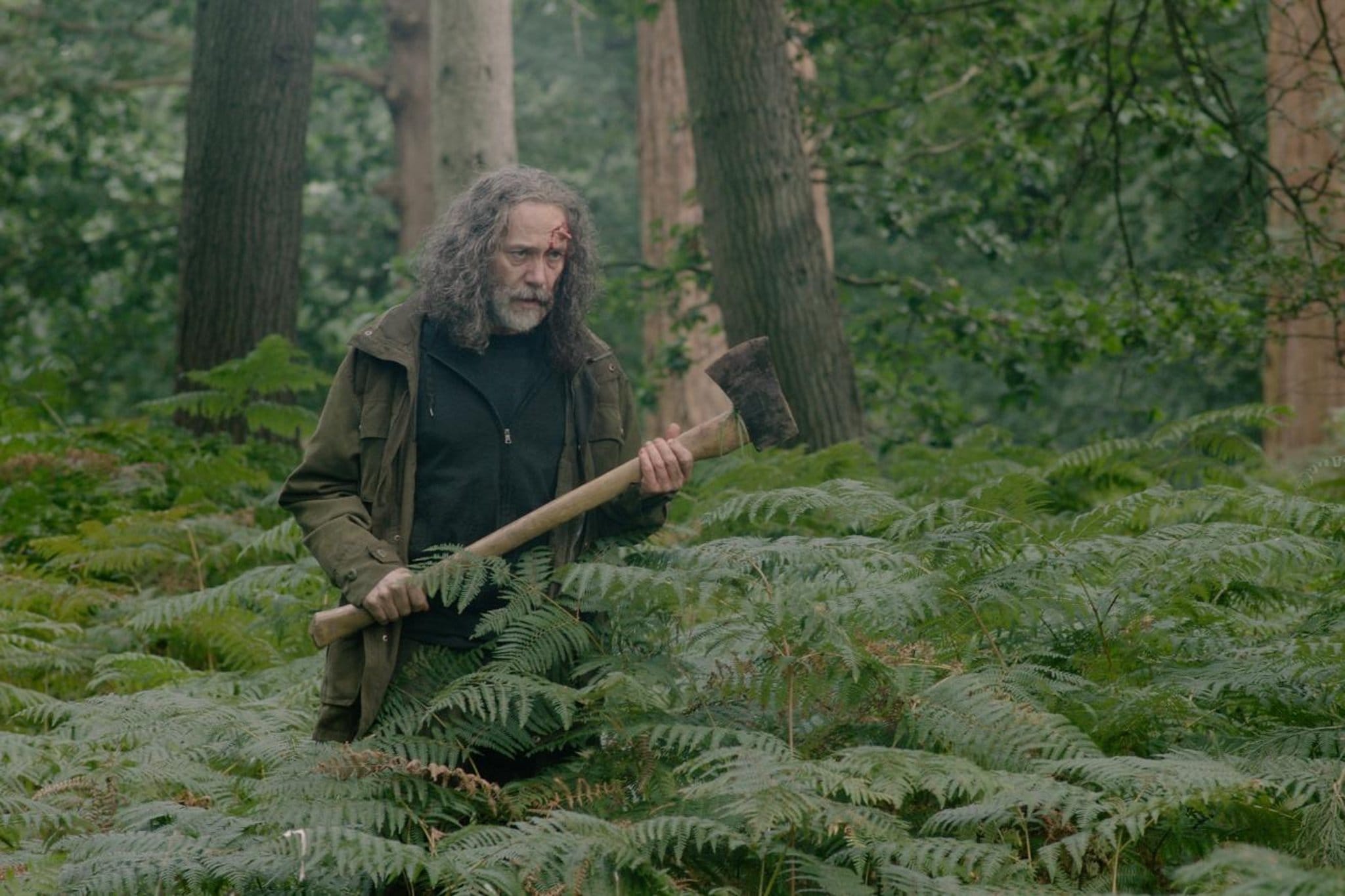I first encountered Ben Wheatley’s work when I saw Kill List, a roaring and devastating combination of British “kitchen sink drama” and visceral folk horror. My first reaction after watching the film was something like “oh my god, what did I just see?”
If you haven’t seen it, dear reader, please check it out, if only because of the now already infamous “hammer scene”. Since then Wheatley has produced a lot more feature work, like the trippy black and white A Field in England, the black comedies Sightseers and Free Fire. He has also moved up the filmmaking food chain and has directed big budget films like High Rise and Rebecca. And guess who is directing the sequel to our beloved mega shark versus Jason Statham rollercoaster The Meg? Indeed, Mr. Wheatley.
But when I first heard of his latest feature In The Earth, there were several things that caught my attention and excited me. It was quite a small production, written and filmed during the pandemic, shot quickly (with only 15 shooting days), with a limited cast and limited locations. And most importantly, it was once again a horror set in a rural setting. Could this be a return to form, a revisiting of his grassroot folk horror origins? Well, consider that “oh my god – again – what did I just see?” was my first reaction, the answer is yes!
So let’s start digging In The Earth.
The World of In The Earth
In The Earth is set in a world where a (different) pandemic has hit our society. People wear facial masks and disinfect their hands with gels. And while this is of course very recognisable to us all, it is clear that this is not just COVID19, but something probably more devastating, without ever revealing more details.
Soil scientist Martin Lowery is sent to a scientific outpost in the woods. He is to meet with his former colleague (and ex-lover?) Olivia Wendle, who is researching crop growth. She has set up her research station at a certain spot in the woods that has unusually fertile soil. But Wendle has apparently gone missing. Martin first learns of the folklore tales of a local ghost, Parang Fegg, and then is accompanied by park ranger Alma. Together they start a two day hike into the woods, to Wendle’s site.
At night they are attacked and robbed, leaving them barefooted, causing Martin to severely hurt his foot. Luckily they are discovered by the mysterious Zach. He is a loner who lives in the forest to get away from the crowded cities. Zach helps Martin and Alma, but he has sinister purposes. He drugs them, dresses them up in strange white robes and starts making ritualistic photographs. Zach worships some kind of old force in the forest, and his photographs are a way of worship.

Alma and Martin manage to escape, and discover Wendle. Under the fertile spot in the forest is a “mycorrhizal mat”, an underground neural connection between fungi, the trees and all other plant life. And at its epicenter is a standing stone. Wendle is trying to find a way to communicate with this “network”. She believes she can talk with “nature” itself. But this is not without its price…
Weird Horror and Explaining In the Earth
The above description of the basis plot of In The Earth fails to really communicate what an experience this film is. In many ways it is a pure cinematic trip, featuring sequences of trippy images, hallucinations, stroboscopic effects, and a soundtrack by Clint Mansell that is completely brilliant and out of this world. As critic Mark Kermode says in this interview with Ben Wheatley, it is a sensory overload that should be seen on the big screen.

The (obvious) main reference here is Kubrick’s 2001: A Space Odyssey. The similarities between the films are vast. Both feature a “magical” object in the form of a monolith or a standing stone. The opening images of In The Earth – featuring the battering of a rock – clearly resemble the hitting of the bones in the dawn of man sequence. And how can we watch contemporary scenes of hallucinogenic imagery without thinking of this?
There are other references of course. The hallucination scenes from the film Altered States can be of interest here, and a similar 2001-inspired sequence can be found in Annihiliation.
But let’s take a look at what causes these dreamlike and drug infused visions: mushrooms.
Fungal Horror
Mushrooms come in all shapes and sizes, and the same goes for fungi inspired horror or fungal horror. An interesting and quite popular subtheme here is the fungal zombie: a normal person is infected by fungal spores, and transforms into a zombie-like creature. The Girl With All The Gifts is an excellent example, as are Cargo and the video game The Last of Us. This often leads to imagery containing graphic and disgusting body horror.
However, it’s also important to point out that “fungal horror” is a subset of another bigger category: nature horror or eco horror. This is a big subgenre, containing for example stories where nature takes her revenge. Think of The Ruins with its killer vines, or The Happening.
— FOUNDATIONS OF HORROR —
Further explore these subgenres & tropes. more>>
#Lovecraftian | #Natural horror

An early story of particular interest is the novella The Willows by Algernon Blackwood. Two travellers on a canoe trip feel more and more threatened by the landscape they travel through. Especially the willows radiate a threatening quality, like they are alive or at least conscious in some way. This suggestive story was very influential on HP Lovecraft, and can be seen as a prototypical “weird” and “cosmic horror” story.
This is precisely the same with the “mycorrhizal mat” of In The Earth. The fungi-sprouted network is the hive mind of nature. It is a weird, unknowable entity. Something stronger, older and larger than all of us. Seen in that way, In The Earth is a very typically Lovecraftian tale:
Scientists encounter a weird and unknowable thing, try to make sense of it, and as result lose their mind. You can’t get more Lovecraft than that.

And if horror is indeed a reflection on our contemporary times and fears, then it comes as no surprise that weird lovecraftian eco horror is on the rise. Films like Annihilation, Color Out of Space, They Remain and philosophical works like Hyperobjects, In the Dust of This Planet all reflect on our (post)human relationship with nature.
We can all identify with Wendle’s all consuming desire to communicate with nature. Imagine it could really work, if someone or something picked up that phone that we’ve been ringing. What would we say? Would we curse it for the blistering heat it sends? In our anger threaten to destroy it even more? Or would we beg and plead for our puny trivial lives? Or would we simply say: “…sorry…”?
Last Updated on July 6, 2021.

